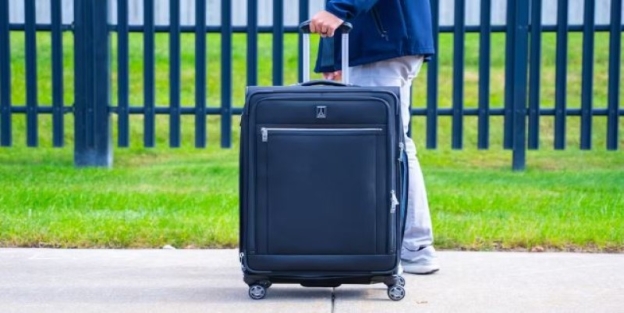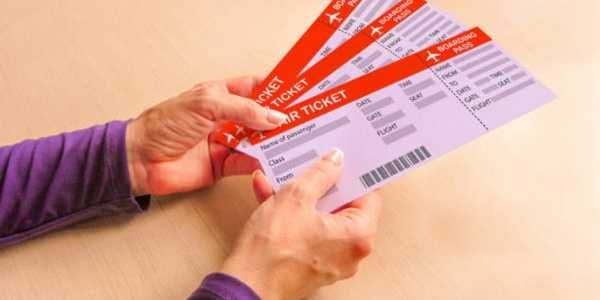How To Plan Your Perfect 10-Day Europe Trip Itinerary
A 10-day Europe trip is long enough to explore several countries without feeling rushed, but short enough that you’ll need to prioritize. The key is balancing big-name cities with smaller, easy-to-reach destinations, while keeping travel time efficient and costs manageable. Below is a practical guide with sample itineraries, travel tips, and booking advice to help you build the trip that fits your budget and style.
Step 1: Decide On Your Travel Style
Your travel style sets the foundation for the entire trip. Some travelers want bucket-list landmarks like the Eiffel Tower or the Colosseum, while others crave regional food, small towns, or coastal escapes.
City Highlights: Best for first-time visitors who want the big names—Paris, Rome, London, Barcelona. Museums, palaces, and famous squares are the focus.
Cultural & Scenic Mix: A slower pace with countryside regions such as Tuscany in Italy, Bavaria in Germany, or Provence in France, combined with major hubs.
Eastern Europe Focus: A great choice if you’re looking to stretch your budget further. Cities like Budapest, Kraków, and Prague deliver history and charm at lower costs than Western Europe.
Coastal & Mediterranean: Perfect if you prefer warm weather, beaches, and relaxed towns. Think Amalfi Coast, Santorini, or the French Riviera.
Clarifying your style keeps you from overspending and ensures your trip matches your expectations.
Step 2: Choose Your Route
Routes should balance variety with minimal backtracking. Trains work well in mainland Europe, while flights are practical for longer jumps, like Paris to Athens.
Sample 10-Day Itineraries
Classic Cities Itinerary

- Days 1–3: Paris (Eiffel Tower, Louvre, Seine cruise)
- Days 4–6: Rome (Colosseum, Vatican, Trastevere)
- Days 7–10: Barcelona (Sagrada Família, Gothic Quarter, Montjuïc)
Central Europe Focus
- Days 1–3: Prague
- Days 4–6: Vienna
- Days 7–8: Bratislava (easy day trip)
- Days 9–10: Budapest
Northern Adventure
- Days 1–3: Amsterdam
- Days 4–6: Berlin
- Days 7–10: Copenhagen (with a day trip to Malmö, Sweden)
Mediterranean Journey
- Days 1–3: Athens
- Days 4–7: Santorini or Mykonos
- Days 8–10: Rome
Whichever route you choose, plan transfers early in the morning or evening to avoid losing sightseeing time.
Step 3: Budgeting Your Trip
Budgets vary by region, but planning around averages helps.
Flights:
Transatlantic fares average $500–$700 if booked 3–4 months ahead. Low-cost carriers such as Ryanair and EasyJet sell intra-Europe flights for under $60 when booked early.
Accommodation:
- Hostels: $25–$40/night (Generator, St. Christopher’s).
- Mid-range hotels: $100–$150/night (ibis, Novotel, Holiday Inn).
- Apartments: Airbnb and Vrbo work well for families.
Transport:
- Eurail Pass: $300–$400 for a 7-day pass across multiple countries.
- Local transport passes (Navigo in Paris, Roma Pass in Rome) save on buses and metro rides.
Food:
$40–$60 per day if mixing bakery meals, street food, and sit-down dining.
Planning costs upfront avoids sticker shock and helps prioritize where to splurge.
Step 4: Booking Tips
Booking smartly saves both time and money.
Flights
- Use Google Flights to track fares and set alerts.
- Consider open-jaw tickets (fly into Paris, out of Rome) to save backtracking.
Trains & Buses
- High-speed trains like TGV in France or Italo in Italy cut travel time drastically.
- FlixBus offers budget routes between cities.
Accommodation
- Booking.com provides free cancellation for flexibility.
- Central locations may be pricier, but save money on taxis and transit.
Attractions
- Buy timed-entry tickets for museums like the Louvre or the Vatican to skip long queues.
Step 5: Best Times To Travel
Europe is a year-round destination, but timing impacts costs and crowds.
Spring (April–May): Great for gardens, Easter festivals, and milder temperatures.
Fall (September–October): Harvest season with lower hotel rates and beautiful foliage.
Summer (June–August): Expect packed tourist sites and higher costs, but long daylight hours.
Winter (December–February): Best for Christmas markets in Germany or Austria, and skiing in the Alps.
If you want affordability and fewer crowds, target spring or fall.
Step 6: Packing Essentials

Smart packing keeps you comfortable and saves on baggage fees.
- Carry-on suitcase (Away, Samsonite, or Travelpro).
- Walking shoes with cushioning for cobblestone streets.
- Universal travel adapter (Type C plug works in most EU countries).
- Portable charger for long sightseeing days.
- Crossbody bag or anti-theft backpack (brands like Pacsafe).
- Lightweight layers: weather changes quickly between northern and southern Europe.
Traveling light makes moving between cities less stressful.
Step 7: Tours & Experiences Worth Booking
Certain tours and tickets should be reserved well before arrival.
- Paris: Louvre timed-entry tickets, Eiffel Tower summit passes.
- Rome: Skip-the-line Colosseum and Vatican tours.
- Amsterdam: Anne Frank House tickets sell out months ahead.
- Barcelona: Park Güell and Sagrada Família tickets require advance booking.
GetYourGuide and Viator provide user-friendly platforms for booking tours, often with free cancellation.
Step 8: Day Trips To Add Variety
Day trips break up city stays and reveal another side of Europe.
- From Paris: Versailles Palace or Champagne vineyards.
- From Rome: Pompeii or Tivoli Gardens.
- From Prague: Fairytale town of Český Krumlov.
- From Barcelona: Montserrat Monastery or Costa Brava beaches.
Many trips can be done independently by train, but guided tours ensure convenience if time is tight.
Step 9: Safety & Practical Tips
Europe is generally safe, but smart habits matter.
- Keep digital copies of passports and tickets.
- Use ATMs inside banks rather than at tourist sites.
- Public transit cards (Oyster in London, Navigo in Paris) simplify transport.
- Travel insurance protects against flight delays or medical costs.
- In crowded areas like train stations, use a crossbody bag with secure zippers.
These small steps keep your trip smooth and stress-free.
Step 10: Sample Cost Breakdown (Per Person, Mid-Range Trip)
Here’s a rough estimate for a 10-day trip:
- Flight to Europe: $650
- Intra-Europe flights/trains: $250
- Hotels: $1,200 (10 nights at ~$120)
- Food: $500
- Attractions & tours: $400
- Local transport: $200
Total: Around $3,200
Costs can be reduced by traveling in the off-season, staying in hostels, or limiting long-distance flights.
Choosing The Right Itinerary For You
If it's your first European trip, start with a Classic Cities route like Paris–Rome–Barcelona. For budget-conscious travelers, Central Europe offers incredible history and food at lower prices. If you're more into coastlines and island life, a Mediterranean focus makes sense.
Whichever route you pick, book early, keep travel legs efficient, and mix famous highlights with local experiences. With the right plan, a 10-day trip can give you a taste of Europe’s best and help you decide where to return for longer stays.
Was this helpful? Share your thoughts
- Learned practical methods
- Solved my questions
- Inspired new ideas
-
![Best 25 Foodie Travel Destinations For Authentic Cuisine]() Best 25 Foodie Travel Destinations For Authentic Cuisine
Best 25 Foodie Travel Destinations For Authentic Cuisine -
Do you plan your trips around monuments or meals? For many, the real landmarks are street markets, bakeries, and kitchens where a culture reveals itself through flavor. The most memorable food journeys aren’t about Michelin stars; they're about meals shaped by history, geography, and generations of tradition.
Explore More
-
![Cheapest Way To Book Multi-Day Passes For Theme Parks]() Cheapest Way To Book Multi-Day Passes For Theme Parks
Cheapest Way To Book Multi-Day Passes For Theme Parks -
What if you’re planning a family trip to a bustling theme park, where the thrill of rides and shows awaits, but the ticket prices threaten to drain the vacation budget before the fun even starts? For countless visitors, finding the cheapest multi-day theme park passes turns that dream into reality, unlocking extended adventures without breaking the bank.
Explore More





